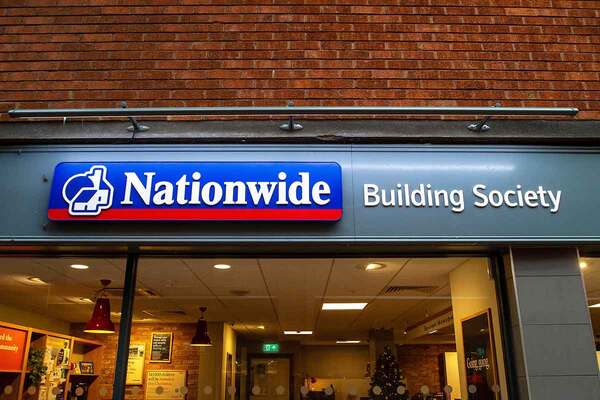You are viewing 1 of your 1 free articles
Downturn: why is L&Q cutting its surplus in half and what does it mean for the sector?
After L&Q revealed it is likely to cut its surplus by £158m this year, Peter Apps asks what this means for the financial model which has defined the housing association sector since 2010
In the memorable words of Martin Lawrence in Bad Boys II: “This shit just got real.”
Since the era of historically low government grant for housing was born in 2010, critics have warned it will only really be tested by a property downturn. What will happen to housing associations which have begun driving income from open market to top up grant cuts when the market next gets tough, they said?
Well, we are about to find out. L&Q is the shining light of the cross-subsidy model. Since its expansion into open market developments from 2010 onwards, the giant London housing association has grown its profits exponentially and successfully converted this cash into thousands of new affordable homes.
But after years of growth (see graph), the organisation will sharply reverse this trend this year. The 102,000-home organisation told investors in a trading update last Thursday that the £348m it booked in 2017/18 will be cut almost in half to £190m in 2018/19, citing a “downturn in the property market” among other factors.
So, what does this mean for L&Q? And perhaps, more importantly, what does it mean for the modern housing association model full stop?
It is important at the outset to state that L&Q is an outlier simply because of how much more money it has been making than everyone else in recent years. In 2017/18, it made the largest surplus in the sector by almost double. The reduced surplus of £190m it is projecting would have been the largest in the sector by almost £15m in 2017/18.
It has also always built contingency for a downturn into its business model. As Fiona Fletcher-Smith, director of development and sales at L&Q, says: “We’ve put in a lot of buffers for ourselves to make sure the market doesn’t kill us. I wouldn’t say we’re totally relaxed, but that’s why we’re still going to come out with a £190m surplus at the end of it.”
The property market downturn is also just one part of a bigger picture, accounting for around a third of the £158m reduction in its surplus.
A substantial chunk of the rest (some £40m) comes from increased spending on the homes it manages. Ms Fletcher-Smith says much of this is post-Grenfell fire safety work. While the government has funded cladding removal, L&Q is paying for improvements to fire stopping, fire doors, fire alarm revamps and in some cases sprinklers to its homes.
“The cladding is actually the easy bit, the rest is a multitude of smaller jobs that when you’ve got 100,000 homes really starts to add up,” she says.
L&Q owns more tower blocks than anyone else (200) but this is a cost which will clearly be felt across the sector and is indicative of the way the business model is changing post-Grenfell.
A focus on existing tenants, quality and safety has shot up the agenda, reflected in the recent Social Housing Green Paper, the review of building regulations carried out by Dame Judith Hackitt and new legislation. Higher investment in existing stock means lower surpluses.
L&Q has also decided to take on extra work. It introduced a new void standard this year, which commits it to bring relets up to the standard it provides for new builds. This is not cheap. It has also taken a financial hit, Ms Fletcher-Smith reveals, by refusing to take handover of some 200 properties built by contractors due to poor quality. This has hit margins but Ms Fletcher-Smith says it was the right choice. “The quality of new build has a dreadful reputation and I want to make sure L&Q is stepping out of that space,” she says.
These increased costs come amid the downturn in the property market. In this regard, L&Q is not really talking about falling house prices.
“The concern expressed by L&Q is more about the slowdown in the number of transactions, driven particularly by uncertainty around Brexit”
Robert Grundy, head of housing at Savills, explains that in the London market prices have only dropped sharply in the prime end. Elsewhere in the capital, he says, they have been “going sideways for a couple of years”.
The concern expressed by L&Q is more about the slowdown in the number of transactions, driven particularly by uncertainty around Brexit.
Analysis by Savills shows a 9.1% drop in transactions in the capital in the year to October 2018 and a close-to 20% drop since 2015. This squeeze is only likely to have increased as March approaches. “Everybody is holding their breath,” says Ms Fletcher-Smith. While this is still primarily a London phenomenon, she says L&Q has seen the slowdown spread out of the capital in recent months, particularly to Essex and the other Home Counties.
We may not know the exact extent of the impact of this on other associations for a while. L&Q has taken a proactive stance, but housing associations are not obliged to issue ‘profit warnings’ to investors in the way publicly listed companies do and only a handful publish half-year results.
These contain some signs of the same issues but on a smaller scale. Notting Hill Genesis, for example, reported a 25.8% fall in terms of its surplus for the first six months of 2018/19 from £75.7m to £56.2m and is budgeting a surplus for the full year at £97.5m, down from £119.3m last year.
Clarion, meanwhile, the UK’s largest housing association, reported a small dip in operating surplus for the first three quarters of 2018/19, recording £232m compared with £243m last year – which it attributed to cost rises “driven predominately by an increased volume of compliance and safety work”.
What is certain is that L&Q is far from the most exposed to the fluctuations of the property market. Two organisations took more from open market sales than L&Q’s £120m in 2017/18: Places for People which turned over £157.5m and Peabody which recorded £135.1m.
But looking at the percentage of income from market sales, L&Q drops to 20th with 11.7% of its £1bn income coming from market sales. West London’s Catalyst Housing tops this list, making 28.2% of its £214m turnover from market sales, rising to 39.2% when shared ownership properties are included.
This measure also shows exposure is not limited to large, London-based providers. The top 10 associations by the percentage of turnover from market sales includes six with a total turnover of less than £100m which operate outside the big city (Broadacres, Chelmer Housing Partnership, Curo, Swan, Ocean Housing Group and North Hertfordshire Homes – now known as Settle).
What would these organisations do if income from sales dried up? The fear is that many may be forced to turn off the development tap.
“It depends on the degree to which any given association is dependent on that sales income,” says Mr Grundy. “It must create some hiatus in development activity if they are in a part of the world where transaction volumes have been affected.”
Susan Hickey, chief financial officer at Peabody, adds: “Our policy has always been not to risk what we can’t afford to lose if the market should turn. If there’s more risk in the system, it’s quite likely there’s going to be fewer affordable homes built.”
She says the organisation is “scrutinising more closely” its investment opportunities but is “determined to keep going”.
“One way through a downturn is to flip schemes designated for market sale to rent”
For its part, L&Q has insisted it will not reduce development. “We are very determinedly not turning the tap off because organisations like us can be counter-cyclical,” says Ms Fletcher-Smith. “But where in the past when you’re in a rising market you will say yes to every opportunity, what we’re signalling now is that we will be far more discerning about what we do.”
One way through a downturn is to flip schemes designated for market sale to rent. Mr Grundy points out there are “ready buyers” in the market for a portfolio of private rented homes. But not every scheme is suitable.
The other option is to convert to affordable or social rent. But this needs what the existing model provides too little of: government grant.
Ms Fletcher-Smith says L&Q has opened conversations with government about upping grant levels to help the sector through Brexit. She says officials have been “very receptive” but there are distractions.
“Poor old government, it’s a question of how much headroom they’ve got at the moment,” she says. “It all leads back to that bloody ‘B’ word.”
Indeed it does. Among its many implications, that word could be driving us towards something commentators have warned of for some time: a reckoning over the sustainability of the low-grant model, which has been the norm since 2010. We will learn what comes next soon enough.
Read more about Brexit
Brexit and the social housing sector: the key risks As the tortuous process of exiting the European Union approaches its denouement, the country remains in a state of uncertainty about what exactly is going to happen. Peter Apps recaps the key risks to the social housing sector
Downturn: why is L&Q cutting its surplus in half and what does it mean for the sector After L&Q revealed it is likely to cut its surplus by £158m this year, Peter Apps asks what this means for the financial model which has defined the housing association sector since 2010
What housing associations are doing to stress-test for Brexit With the UK’s departure from the EU looming, Luke Barratt looks at what housing associations have been doing to prepare
Regulator writes to housing associations with no-deal Brexit warning The regulator has issued a warning to housing associations over the threat of a no-deal Brexit, outlining key risk areas including shortages of crucial materials, a housing market crash and difficulties accessing ‘business-critical’ data
Sector draws up contingency plans for no-deal Brexit The country’s largest housing associations are putting in place contingency plans to protect the future of their organisations
How would the sector cope with a no-deal Brexit? As uncertainty around Brexit mounts and a no-deal looms, Inside Housing asks what it could mean for the housing sector
Current grant system won’t work in a falling market The government needs to think again about grant to prevent housing association development from collapsing in a falling market, writes Matthew Bailes.
S&P would downgrade half its rated housing associations after no-deal Brexit The credit ratings agency Standard & Poor’s (S&P) has said it will downgrade associations it rates if the UK leaves the European Union without a deal
Click here for all our Brexit news to date













